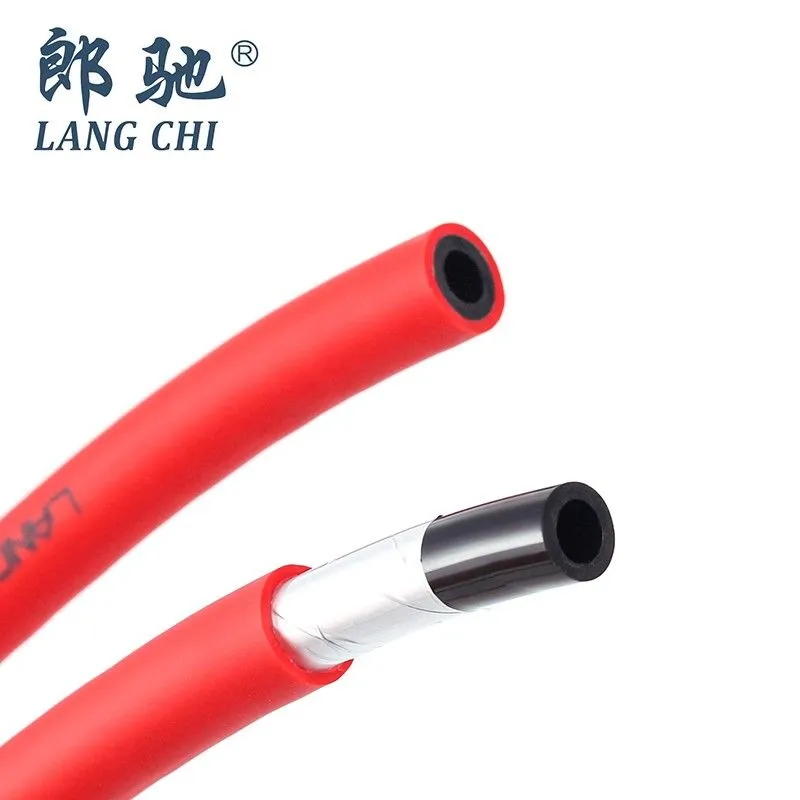
- English
- Español
- Português
- русский
- Français
- 日本語
- Deutsch
- tiếng Việt
- Italiano
- Nederlands
- ภาษาไทย
- Polski
- 한국어
- Svenska
- magyar
- Malay
- বাংলা ভাষার
- Dansk
- Suomi
- हिन्दी
- Pilipino
- Türkçe
- Gaeilge
- العربية
- Indonesia
- Norsk
- تمل
- český
- ελληνικά
- український
- Javanese
- فارسی
- தமிழ்
- తెలుగు
- नेपाली
- Burmese
- български
- ລາວ
- Latine
- Қазақша
- Euskal
- Azərbaycan
- Slovenský jazyk
- Македонски
- Lietuvos
- Eesti Keel
- Română
- Slovenski
- मराठी
- Srpski језик
How to Select a Good PU Tube: A Comprehensive Guide
2024-10-18
Polyurethane (PU) tubes are widely used in industries such as manufacturing, automotive, and pneumatics due to their flexibility, durability, and resistance to abrasion. Selecting the right PU tube is crucial to ensure efficiency and reliability in your application. Below are key factors to consider when choosing a good PU tube.
1. What Is the Tube’s Pressure Rating?
One of the most important factors to check is the pressure rating of the PU tube. The pressure rating indicates the tube’s ability to withstand internal pressure during operation.
- Working Pressure: Ensure that the working pressure of the PU tube matches or exceeds the pressure requirements of your system. A tube that is rated for lower pressure may fail prematurely.
- Burst Pressure: This is the maximum pressure the tube can withstand before it ruptures. For safety and durability, it’s a good idea to choose a tube with a burst pressure at least three times the working pressure.
2. What Is the Tube’s Diameter?
The diameter of the PU tube plays a significant role in the efficiency of fluid or air flow.
- Outer Diameter (OD) and Inner Diameter (ID): Choose a tube with the correct ID and OD for your specific application. The ID affects the flow rate, while the OD ensures the tube fits properly into connectors or fittings.
- Standard Sizes: PU tubes come in a variety of standard sizes. Be sure to select the size that fits your connectors or systems to avoid leaks or inefficiencies.

3. How Flexible Is the PU Tube?
Flexibility is one of the key advantages of PU tubing, but the level of flexibility needed may vary based on the application.
- Tight Spaces: If the tube needs to be routed through tight spaces or bent frequently, a more flexible PU tube will prevent kinking or cracking.
- Hardness (Shore A Rating): The flexibility of a PU tube is often indicated by its hardness. Tubes with lower Shore A ratings are softer and more flexible, while higher ratings indicate stiffer, less flexible tubes.
4. What Is the Temperature Range?
PU tubes are designed to operate within specific temperature ranges. It’s essential to match the tube’s temperature tolerance to your working environment.
- Operating Temperature: Ensure that the PU tube can handle the temperature of your system or surroundings. Most standard PU tubes can operate between -40°C and 60°C, but high-temperature applications may require specialized tubing.
- Cold Weather Resistance: If your application is in a cold environment, verify that the tube remains flexible and functional at lower temperatures.
5. Is the Tube Resistant to Chemicals and Abrasion?
PU tubes are used in environments where they may come in contact with chemicals or abrasive materials. The tube’s resistance to these elements will affect its lifespan and performance.
- Chemical Resistance: Check the PU tube’s resistance to oils, solvents, and other chemicals it may be exposed to. PU is generally resistant to oils and fuels, but different formulations offer varying levels of chemical resistance.
- Abrasion Resistance: If the tube will be subject to friction or rough handling, opt for a tube with a higher abrasion resistance. This ensures longer service life in demanding environments.
6. Is the Tube Transparent or Colored?
PU tubes are available in both transparent and colored varieties, and the choice depends on your specific needs.
- Transparent Tubes: These are ideal for applications where visual monitoring of the fluid or air flow is required.
- Colored Tubes: Colored PU tubes are useful for coding purposes, making it easier to identify different lines in complex systems.
7. Does It Meet Industry Standards?
Make sure the PU tube complies with industry regulations and standards, especially if you are working in sectors like food and beverage, pharmaceuticals, or pneumatics.
- ISO, DIN, or ASTM Compliance: Look for certifications or standards compliance to ensure that the PU tube meets safety, performance, and durability criteria.
8. What is the Tube’s UV and Weather Resistance?
In outdoor applications, the PU tube may be exposed to UV rays and varying weather conditions.
- UV Resistance: For outdoor use, select PU tubes that are resistant to UV degradation to prevent cracking or brittleness.
- Weather Resistance: Ensure the tube can withstand changes in humidity, rain, or other environmental factors that could compromise its durability.
9. How Easy Is It to Install?
Installation is a key consideration, especially in large systems or where frequent maintenance is required.
- Ease of Handling: Choose a PU tube that is easy to cut, install, and secure with standard connectors or fittings.
- Recoil Tubing: For applications requiring high flexibility and minimal space usage, consider PU recoil tubing, which returns to its original shape after stretching.
10. Is There a Cost-Effective Option?
Cost is always an important factor. While it’s tempting to go for the cheapest option, ensure that the tube meets your operational needs in terms of durability and performance.
- Balance Cost and Performance: Compare prices from reputable suppliers, and opt for a tube that balances cost with quality. Cheap tubes may fail prematurely, leading to higher long-term costs.
Conclusion
Selecting a good PU tube involves considering factors such as pressure rating, flexibility, diameter, temperature tolerance, and resistance to chemicals and abrasion. By evaluating these characteristics based on your specific application, you can choose a PU tube that will perform efficiently and last longer in your system. Always remember to work with reputable suppliers and look for industry certifications to ensure you’re getting a quality product.
LANG CHI is a professional PU tube manufacturer and supplier in China, as well as a high-tech enterprise integrating research and development, production, sales, and international trade.Welcome to inquiry us at nblangchi@nb-lc.cn.



